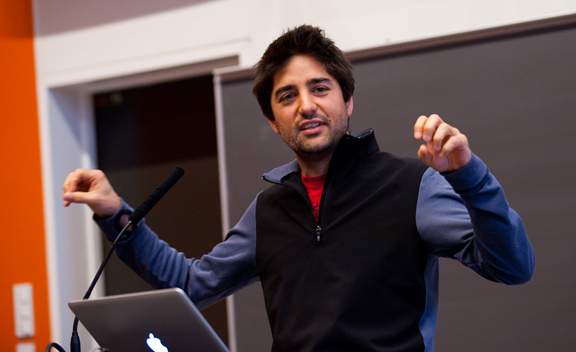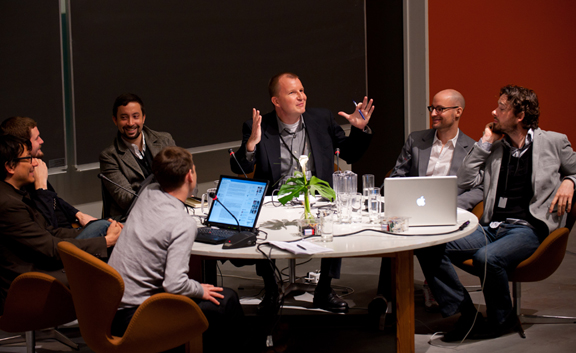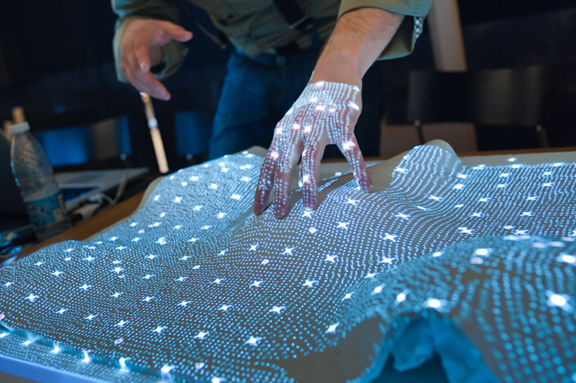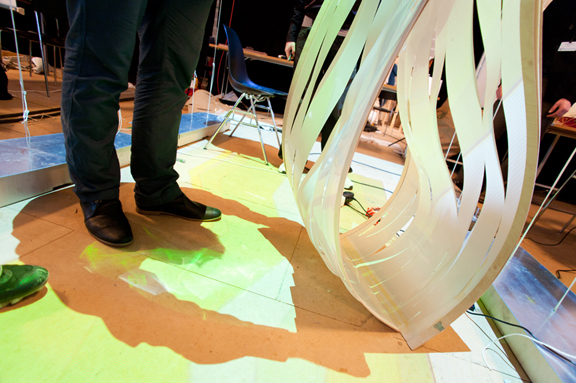Latest News
April 13, 2011


On April 1st, onstage conversation at the IT University of Copenhagen, Denmark, spilled into Twittersphere. The panelists were wrestling with the pitfalls of data abundance. They pondered: How raw is data? When does data become information or knowledge? How is data collected, communicated, or visualized? Who authors data? Is the collection of data a creative design process in itself? Does data lie? Is data always biased, skewed, and sampled? How do we generate data from what we sense?
Feeling the urge to chime in, those in the live audience and web audience commented:
- Should architects be educated in the use of data?
- What bothers me as an engineer is that some structural engineers seem to think that “optimal” means minimal material (weight) for a simple stress criterion: but is the perfect structure a perfect building? Of course not!
- You seem to instigate that it is either data or logic. I would rather argue that data, logic, and visualization go hand-in-hand.
This year, participants were asked to wrestle with the role of data and information; the role of calculation; the role of feedback; and the role of the physical. Split into small groups (called clusters), they were urged to come up with creative ways to shape their digital design with real-world data.
Data Paradox
The ubiquitous smartphones and tablets—iPhones, iPads, and Android tablets, to name but a few—have essentially turned most of us into data consumers as well as data producers: We may check weather data, obtain flight info, and gobble up restaurant reviews on Yelp; at the same time, we may also upload temperature readings, report flight delays, and submit restaurant reviews. This emerging trend makes each of us a living, breathing sensor, allowing creative thinkers like Usman Haque, CEO of Connected Environments and founder of Pachube, to explore the intersection of technology, telecommunications, and architecture.
One of Haque’s projects, commissioned by the city of Santa Monica, California, was a night-long laser show, dubbed Primal Source. The light show, projected on to a mist screen, produced dynamically changing shapes and colors throughout the night, brought on by the voices of the participants themselves (estimated to be 200,000).
“Responding to sounds emanating from the crowd, the system’s modes changed every few minutes depending on how active the crowd participation was (more quickly when there was more noise),” explained Connected Environments at its web site. “Each mode responded in a slightly different way to the individual voices and sounds picked up by 8 microphones distributed towards the front.”
To some, projects like Primal Source may be no more than an experiment. To others, it’s the dawning of a new design philosophy, better suited for the generation that likes to have a say in how their living spaces are shaped.
Easy access to public data (such as climate data and city data) and private data (volunteered by willing individuals via Twitter, Facebook, Pachube, and other venues) also creates significant anxiety, as expressed by online comments:
- Is it necessary to use only data to inform the design? Or could we be smarter by informing design with data through the smart filters (great remark about the fact that we need more filters) of logic and reasoning?
- Some data is difficult to measure or there may be no method to extract information. Sound scattering is difficult to understand and even more difficult to design for ...
- Playing the devil’s advocate: Are we taking a step back from logic to data?


GUI-Driven Computational Design
Now in its 10th year, the SmartGeometry Group is known for championing computational design, mixing parametric CAD modeling and programming scripts to explore forms and concepts. Bentley Systems’ GenerativeComponents, a free software package downloadable from the company’s site, is among the leading software packages that facilitate conference participants’ digital designs.
GenerativeComponents, explained Bentley Systems, “captures and exploits the critical relationships between design intent and geometry. Designs can be refined by either dynamically modeling and directly manipulating geometry, by applying rules and capturing relationships among building elements, or by defining complex building forms and systems through concisely expressed algorithms.”
The sophistication of GenerativeComponents, especially its use of scripting languages, may prove a daunting challenge for the uninitiated. These users often turn to a more graphical software, like Rhino plug-in Grasshopper, to execute their generative design concepts. However, upcoming releases of GenerativeComponents may rely more drag-and-drop GUI, less on scripting. Highlighting the new features in development, Bentley Systems officials listed the following:
- Freedom to choose between methods (direct, hands-on modeling; expressions, inline conditional, and functional; object-oriented scripting environment; programing using C# and VB.Net)
- Quickly prototype a design graphically
- Refine it without manual remodel for each scenario
- Add scripting for more control
More Data, for Better of Worse
As sustainable design becomes the battle cry of many professions, parametric CAD software users from all fields will face new challenges presented by massive amount of data. There’s no shortage of material data, climate data, performance data, and structural-thermal data. But where did the data come from? How was it collected? Was the manner in which it was collected appropriate for how you intend to use it? How frequently is the data refreshed? (To quote Sarah Krasley, Autodesk product manager for sustainability, “Data is like milk. It’ll go bad if nobody restock.”)
In the era of information overload, data is both a blessing and a curse.
Subscribe to our FREE magazine, FREE email newsletters or both!
Latest News
About the Author
Kenneth Wong is Digital Engineering’s resident blogger and senior editor. Email him at [email protected] or share your thoughts on this article at digitaleng.news/facebook.
Follow DE





